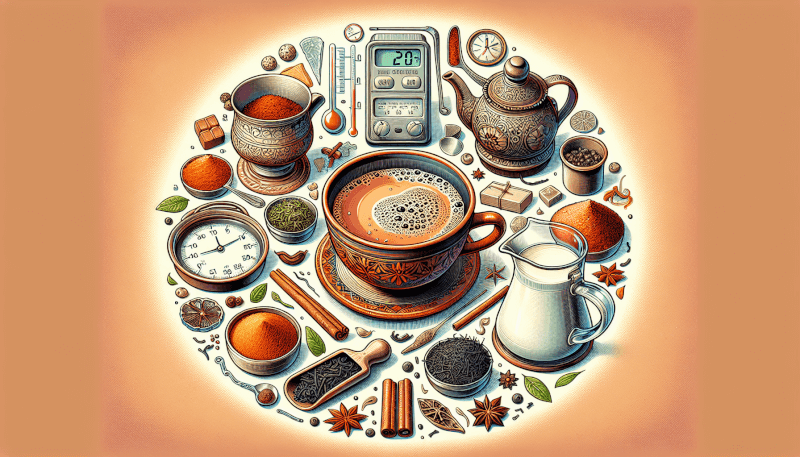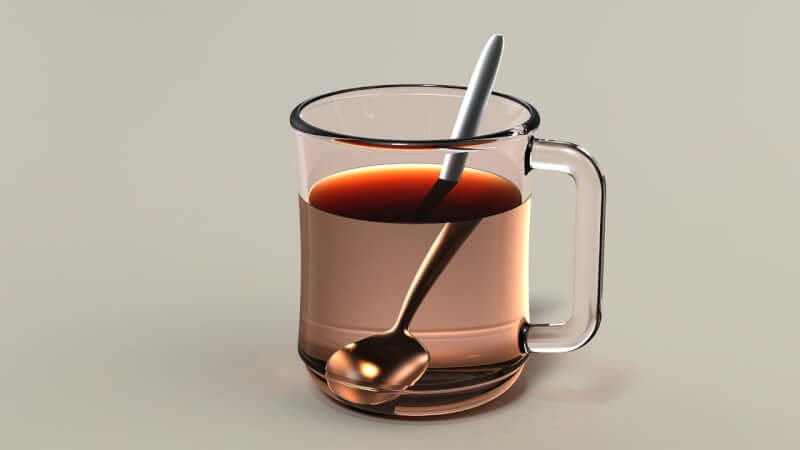Are you a tea lover in search of the perfect cup of chai? Look no further! In this article, we will share some valuable tips to help you brew the most exquisite chai tea right in the comfort of your own home. From the ideal tea-to-water ratio to essential spices and brewing techniques, we’ve got you covered. Get ready to elevate your tea-drinking experience and savor the rich flavors of this beloved beverage. Get your teacup ready, because a delightful chai adventure awaits!
Choosing the Right Ingredients
Selecting the Tea Leaves
When it comes to brewing the perfect cup of chai tea, selecting the right tea leaves is crucial. You have a variety of options to choose from, including black, green, or even white tea leaves. Each type of tea leaves will lend a unique flavor profile to your chai tea, so it’s important to consider your personal preferences. If you prefer a stronger and bolder flavor, black tea leaves are a great choice. On the other hand, if you prefer a lighter and more delicate flavor, green or white tea leaves may be more to your liking. So, take some time to explore and experiment with different types of tea leaves to find the one that suits your taste buds the best.
Choosing the Spices
Spices are what give chai tea its signature warmth and depth of flavor. The most common spices used in chai tea include cinnamon, ginger, cardamom, cloves, and black pepper. However, you have the freedom to customize your chai tea by adding or omitting spices based on your preferences. For example, if you enjoy a spicier flavor, you can increase the amount of ginger or black pepper. Play around with the spice combinations to create a chai tea that is truly tailored to your taste.
Considering Sweeteners
The level of sweetness in your chai tea is entirely up to you. Some people prefer their chai tea to be on the sweeter side, while others enjoy a more balanced or even unsweetened version. There are a variety of sweeteners you can choose from, including sugar, honey, maple syrup, or even stevia for those watching their sugar intake. It’s important to taste as you go when adding sweeteners, as the intensity of the spices can vary and impact the overall sweetness of the tea. So, start with a small amount of sweetener and adjust accordingly to find your perfect balance.
Preparing the Tea Leaves
Measuring the Tea Leaves
To ensure consistency in every cup of chai tea you brew, it’s important to measure the tea leaves accurately. The general rule of thumb is to use one teaspoon of tea leaves per cup of water. However, feel free to adjust the amount based on your personal taste preferences. If you prefer a stronger tea, you can add an extra half teaspoon or even a full teaspoon of tea leaves. By measuring the tea leaves, you can ensure that each cup of chai tea is perfectly balanced and not overpowering.
Crushing the Spices
To release the flavors and aromas of the spices, it is recommended to crush them slightly. This can be done using a mortar and pestle or by placing the spices in a resealable plastic bag and gently pressing down on them with a rolling pin. Crushing the spices helps to enhance their flavors and ensures that they infuse properly into the tea during the brewing process. Don’t worry about completely pulverizing the spices; a gentle crushing is all that’s needed to get the desired result.
Mixing the Ingredients
Once you have selected your tea leaves and crushed your spices, it’s time to mix all the ingredients together. The easiest way to do this is by combining the tea leaves and spices in a bowl or container and giving them a good stir. This step ensures that all the flavors are evenly distributed, resulting in a well-balanced cup of chai tea. Mixing the ingredients thoroughly also helps to prevent any clumping or uneven distribution of the spices, ensuring that each sip is consistently flavorful.
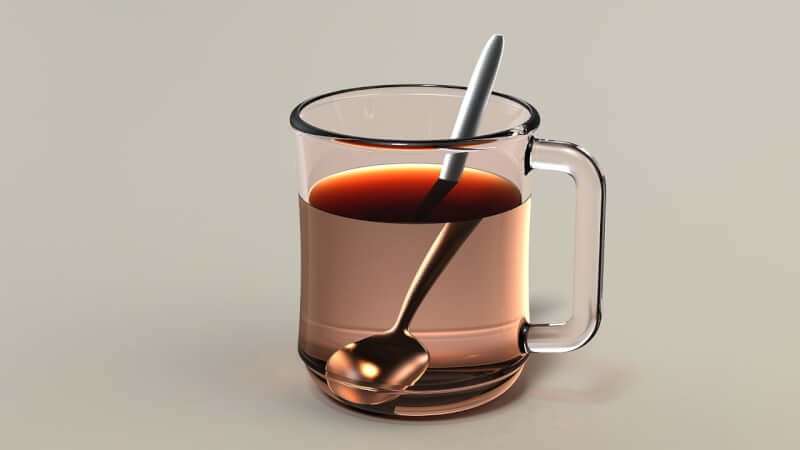
Boiling the Water
Using Filtered Water
The quality of water used for brewing your chai tea can greatly impact the final taste. To ensure the best results, it is recommended to use filtered water. Filtered water helps to remove any impurities or off-flavors that may be present in tap water, resulting in a cleaner and more pure tea. If you don’t have access to filtered water, boiled tap water can also work, but be mindful of any unusual tastes that may come through in the tea.
Determining the Temperature
The temperature at which you boil the water can influence the extraction of flavors from the tea leaves and spices. For chai tea, it’s best to bring the water to a rolling boil. This ensures that the tea leaves and spices are fully infused into the water, resulting in a robust and flavorful cup of chai. If you have a temperature-controlled kettle, you can set it to 212°F (100°C) to achieve the desired boiling temperature. Otherwise, you can simply wait until the water reaches a vigorous boil and then proceed to the next step.
Boiling the Water
Once the water has reached a rolling boil, it’s time to carefully pour it into your teapot or saucepan. Take caution when handling the boiling water to prevent any accidents or burns. If you’re using a teapot, make sure it’s heat-resistant and has a good pouring spout to avoid any spills. If you’re using a saucepan, ensure that it is deep enough to accommodate the boiling water and the other ingredients. Boiling the water properly sets the foundation for a delicious cup of chai tea.
Infusing the Tea
Using a Teapot
Using a teapot is a traditional and widely preferred method for infusing chai tea. Once you’ve poured the boiling water into the teapot, cover it with a lid and let the tea leaves and spices steep for approximately 5-7 minutes. This steeping time allows for the flavors to fully develop and infuse into the water. After the steeping time has elapsed, you can use a strainer to pour the brewed tea into your cup, ensuring that any tea leaves or spices are caught by the strainer.
Using a Saucepan
If you don’t have a teapot or prefer a more rustic approach, you can always use a saucepan to infuse your chai tea. After adding the boiling water to the saucepan, place it over low heat and let it simmer for about 5 minutes. This gentle simmering allows the tea leaves and spices to release their flavors gradually. Once the simmering time is up, remove the saucepan from the heat and strain the tea directly into your cup.
Using a French Press
For a quick and convenient method of infusing chai tea, you can use a French press. After adding the boiling water to the French press, let the tea steep for around 4-6 minutes. The metal mesh filter in the French press will help to separate the tea leaves and spices from the liquid, ensuring a smooth and sediment-free cup of chai tea. Once the steeping time is up, slowly press the plunger down to separate the brewed tea from the ingredients.
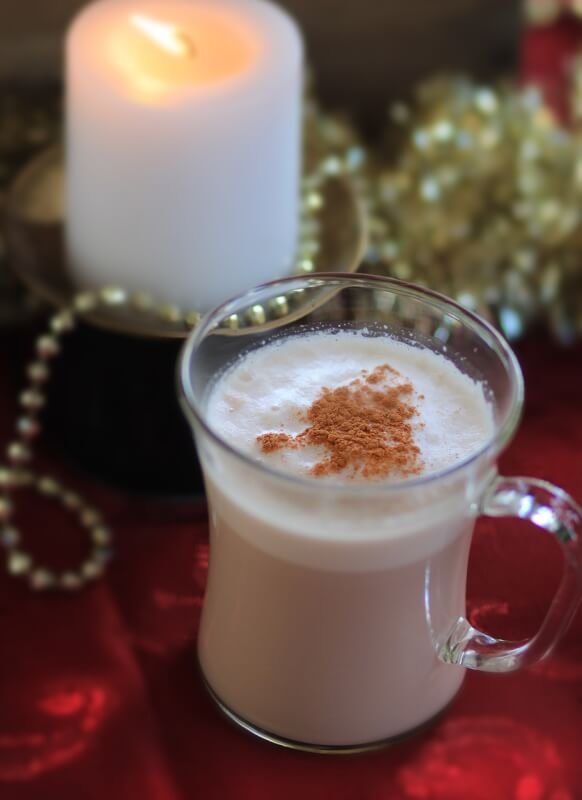
Adding Sweeteners and Milk
Choosing the Right Sweetener
When it comes to adding sweeteners to your chai tea, the possibilities are endless. As mentioned earlier, you can choose from sugar, honey, maple syrup, or even stevia. The choice of sweetener depends on your personal taste preferences and dietary considerations. If you enjoy a traditional chai tea, sugar is often the go-to option. However, if you’re looking for a healthier alternative, honey or stevia can be excellent choices. Experiment with different sweeteners to find the one that brings out the best flavors in your chai tea.
Determining the Amount of Sweetener
Finding the right balance of sweetness in your chai tea can be a bit of a trial-and-error process. It’s best to start with a small amount of sweetener and gradually increase it to taste. Remember that the level of sweetness can vary depending on the intensity of the spices and your personal preference. Be mindful not to overpower the other flavors in the tea with excessive sweetener, as it should enhance the overall taste rather than dominate it.
Adding Milk or Dairy Alternative
Adding milk or a dairy alternative is a common practice in chai tea preparation. The milk helps to mellow out the strong flavors of the tea leaves and spices, creating a creamy and well-rounded cup of chai tea. You can use cow’s milk, almond milk, soy milk, or any other milk of your choice. The amount of milk you add depends on how creamy you want your chai tea to be. Start with a small amount and adjust as needed to achieve your desired consistency.
Straining and Serving
Selecting the Right Strainer
When it comes to straining your chai tea, it’s important to choose a strainer that effectively catches any leftover tea leaves or spices. A fine mesh strainer or a tea infuser with a fine mesh is ideal for this purpose. Make sure the strainer fits securely over your cup or teapot, allowing for easy pouring without any spillage. Using a proper strainer ensures that your chai tea is smooth and free from any unwanted sediment.
Straining the Tea
To strain your chai tea, simply pour it through the selected strainer into your cup or teapot. Hold the strainer securely to prevent any accidents and pour the tea slowly to avoid any splashing. The strainer will catch any tea leaves or spices, preventing them from making their way into your cup. After straining the tea, take a moment to appreciate the rich aroma and vibrant color of your freshly brewed chai tea.
Serving the Tea
Once your chai tea is strained and ready, it’s time to serve it and enjoy! You can pour it into a teacup or a large mug, depending on your preference. If you like to savor your chai tea slowly, a teacup may be more suitable. However, if you prefer a larger serving or like to sip your tea throughout the day, a mug is a great option. Remember to serve your chai tea while it’s still hot to fully experience its comforting warmth and flavors.
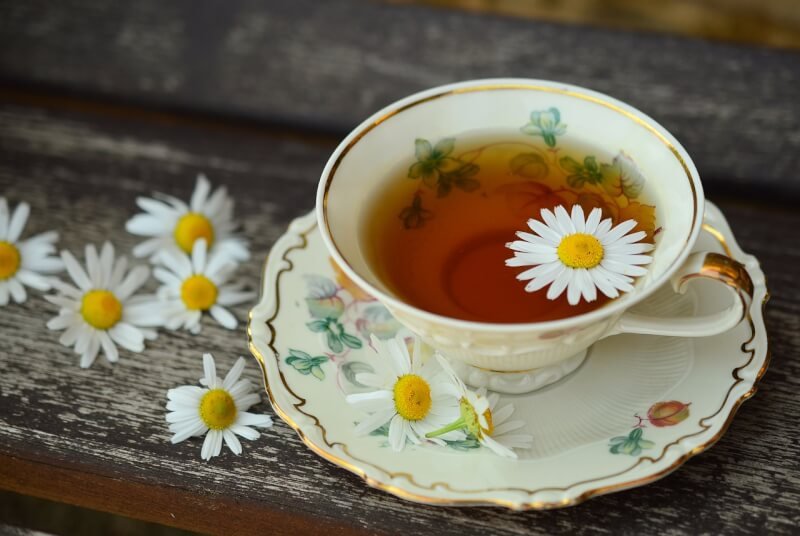
Experimenting with Flavor Variations
Adding Citrus Zest
If you’re feeling adventurous and want to add a burst of freshness to your chai tea, consider adding some citrus zest. This can be accomplished by grating the zest of an orange, lemon, or even a lime and adding it to the tea during the brewing process. The citrus zest adds a vibrant and tangy note to the chai tea, elevating its flavor profile and giving it a delightful twist. Start with a small amount of zest and adjust according to your taste preferences.
Incorporating Herbal Ingredients
To enhance the aromatic and therapeutic qualities of chai tea, you can incorporate herbal ingredients into your recipe. Herbs like fresh mint leaves, lavender buds, or even rose petals can add a unique and delightful dimension to your chai tea. Experiment with different combinations of herbs to create a chai tea that suits your mood and desires. Just be mindful of the intensity of the herbs, as you don’t want them to overpower the spices and tea leaves.
Infusing with Vanilla
For those who enjoy the rich and comforting flavor of vanilla, infusing your chai tea with vanilla is an excellent option. You can use a whole vanilla bean or vanilla extract to achieve this. Simply split the vanilla bean open and scrape out the seeds, then add them to the tea during the brewing process. If you’re using vanilla extract, add a few drops to the tea once it has finished steeping. The addition of vanilla adds a creamy and sweet undertone to your chai tea, making it even more delicious.
Storing Leftover Chai Tea
Allowing the Tea to Cool
If you have any leftover chai tea, it’s important to handle it properly to maintain its freshness and flavor. Before storing the tea, allow it to cool completely to room temperature. This ensures that no condensation builds up inside the storage container, which could lead to mold or a change in taste. Putting hot tea directly into an airtight container can also create a vacuum seal, making it difficult for the tea to cool down.
Transferring to an Airtight Container
Once your chai tea has cooled down, it’s time to transfer it to an airtight container for storage. This can be a glass jar, a thermos, or any other container that can be sealed tightly. Ensure that the container is clean and dry before pouring in the tea. Airtight containers help to preserve the flavors and aromas of the chai tea and prevent any exposure to outside odors or moisture. Store the container in a cool and dark place, away from direct sunlight or excessive heat.
Reheating Properly
When you’re ready to enjoy your leftover chai tea, it’s best to reheat it gently to avoid any overcooking or loss of flavor. You can reheat the tea on the stovetop over low heat, stirring occasionally until it reaches your desired temperature. Avoid boiling the tea for an extended period, as this can make it taste bitter. Alternatively, you can use a microwave to reheat the chai tea, but be sure to do it in short intervals and stir in between to distribute the heat evenly.
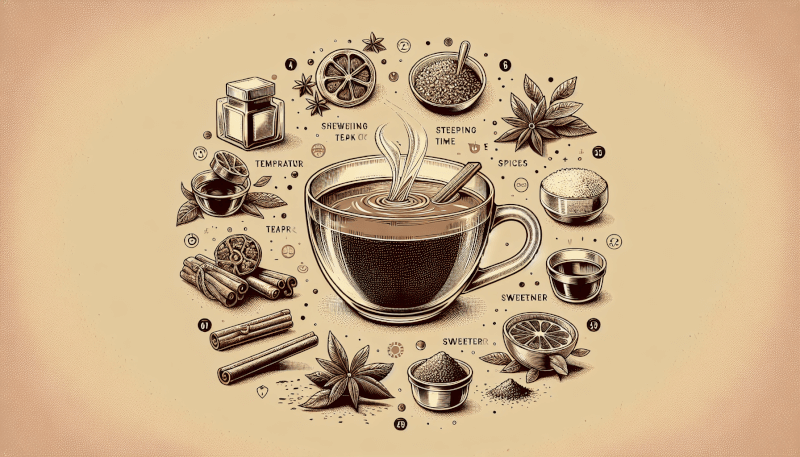
Common Mistakes to Avoid
Over-Steeping the Tea
One common mistake when brewing chai tea is over-steeping the tea leaves and spices. Over-steeping can result in a bitter and overly strong cup of tea. To avoid this, be mindful of the recommended steeping time and set a timer if needed. If you prefer a milder flavor, you can reduce the steeping time slightly. Remember, it’s always better to start with a shorter steeping time and gradually increase it if desired.
Using Poor Quality Ingredients
Using poor quality tea leaves, spices, or sweeteners can significantly impact the taste of your chai tea. It’s worth investing in high-quality ingredients to ensure that your chai tea is flavorful and enjoyable. Opt for organic tea leaves and spices whenever possible, as they tend to have a more robust and natural flavor. Similarly, choose sweeteners that are of good quality and match your personal preferences. By selecting the right ingredients, you will create a chai tea that truly stands out in terms of taste and quality.
Using Too Much Sweetener
While some sweetness is essential for a delicious cup of chai tea, using too much sweetener can overpower the other flavors and make the tea overly sugary. It’s best to start with a small amount of sweetener and gradually add more to taste. Remember that the spices in chai tea provide natural sweetness and depth of flavor, so you may not need as much additional sweetener as you think. Be mindful of creating a balanced cup of chai tea that harmoniously blends the sweetness with the other elements.
Tips for Achieving the Perfect Consistency
Adjusting the Tea to Water Ratio
If you find that your chai tea is either too strong or too weak, you can adjust the tea-to-water ratio to achieve the perfect consistency. If your tea is too strong, simply increase the amount of water while using the same amount of tea leaves and spices. Conversely, if your tea is too weak, decrease the amount of water while keeping the tea ingredients constant. This simple adjustment allows you to customize the strength of your chai tea according to your preference.
Steeping for a Longer or Shorter Time
The steeping time plays a significant role in extracting flavors from the tea leaves and spices. If you find that your chai tea lacks depth and boldness, you can extend the steeping time by a minute or two. This allows more time for the flavors to infuse into the water, resulting in a stronger cup of chai tea. On the other hand, if your chai tea is too overpowering, you can reduce the steeping time slightly to mellow out the flavors. Experiment with different steeping times until you find the perfect balance.
Balancing the Flavors
Achieving the perfect balance of flavors in your chai tea may take some trial and error. Pay attention to the interplay between the tea leaves, spices, sweeteners, and milk, and adjust each component as necessary. If you find that the spices are overpowering the other flavors, you can decrease the amount of spices or increase the amount of sweetener and milk. Remember, chai tea is all about achieving a harmonious blend of flavors, so be patient and willing to make adjustments along the way. With practice, you’ll become an expert at finding the ideal balance for your taste buds.
Brewing the perfect cup of chai tea requires attention to detail and a willingness to experiment with different techniques and ingredients. By selecting high-quality ingredients, measuring accurately, and adjusting variables such as steeping time and sweeteners, you can create a chai tea that suits your taste preferences perfectly. With each cup you brew, you’ll develop a deeper understanding of the brewing process and refine your technique to truly master the art of chai tea. So embrace the journey and enjoy the rewarding experience of brewing your homemade chai tea.
